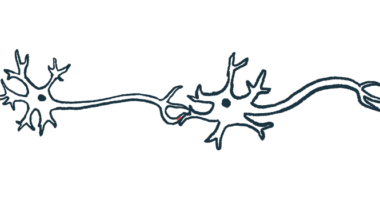Measuring electrical activity of neck muscles may be new tool in ALS
Technique may help patients who can't tolerate tongue exams

Measuring the electrical activity of muscles in the neck can help clinicians to identify dysfunction in certain motor neurons — the nerve cells that control voluntary movement — in people with amyotrophic lateral sclerosis (ALS), a study from researchers in China demonstrates.
Similar testing is now often done using a muscle of the tongue called the genioglossus, but this can be uncomfortable. The findings of this new study suggest that critical neck muscles, specifically the sternocleidomastoid and trapezius muscles, may be assessed instead in people with ALS who don’t tolerate genioglossus examinations.
For patients, this could help in identifying dysfunction in the muscles affecting speech and swallowing, and allow clinicians to better adjust treatment to potentially ease symptoms.
According to the researchers, testing neck muscles “might help guide clinical diagnosis and treatment strategies.”
The study, “Diagnostic value of EMG of sternocleidomastoid and trapezius in assessing bulbar lower motor neuron involvement in amyotrophic lateral sclerosis patients,” was published in the Journal of Electromyography and Kinesiology.
ALS is a disorder marked by the death and degeneration of motor neurons, which are the specialized nerve cells that control movement. The disease can affect upper motor neurons, which are found in the brain and spinal cord, as well as lower motor neurons (LMNs), which connect the spinal cord to muscle cells throughout the body.
Technique called EMG tests electrical activity in muscle cells
A diagnostic technique called electromyography (EMG), which works to measure the electrical activity of muscle cells, is classically used to help detect and track LMN dysfunction in people with ALS.
In some ALS patients, the disease affects bulbar LMNs, which are the nerve cells that control movements of the mouth and tongue. The gold standard for measuring damage to these neurons is EMG of the genioglossus, which is a muscle in the tongue. But doing an EMG test on the tongue can cause discomfort, so researchers have been exploring other options that could be easier for patients.
Now, scientists in Beijing explored the idea that EMG tests of muscles in the neck might be substituted for testing of the tongue to measure bulbar LMN dysfunction in ALS. To that end, the research team launched a study involving 203 ALS patients.
The scientists conducted EMG tests in three muscles, first testing the genioglossus to look for LMN dysfunction. The team also tested the sternocleidomastoid and trapezius, which are two of the muscles in the neck that stretch from the base of the skull to the shoulder blades.
The results generally supported the idea that patients with EMG abnormalities in the tongue, which suggest bulbar LMN involvement, usually also have EMG abnormalities in neck muscles.
Statistical tests specifically showed that an EMG of the sternocleidomastoid would accurately identify 84.1% of patients who had bulbar LMN involvement and 76.9% of those who did not. Accuracy was slightly lower with the trapezius, identifying 74.4% of patients with involvement and 64.5% without involvement.
Better EMG sensitivity and diagnostic accuracy can help clinicians pay closer attention to … [mouth and tongue] involvement [in ALS patients] and adjust treatment strategies.
The researchers noted that the lower accuracy with the trapezius was largely due to EMG abnormalities being more common in this muscle than in the other two muscles. By contrast, rates of EMG abnormalities were comparable for the genioglossus and the sternocleidomastoid.
A system called the Awaji-Shima criteria has been proposed to help identify ALS based on EMG findings. The researchers noted that EMG of any of the three tested muscles being used to represent the bulbar region would provide similar results according to these criteria.
Collectively, these data suggest that EMG of neck muscles “could not fully represent bulbar LMN involvement, but they are correlated with it,” the researchers wrote, adding that “better EMG sensitivity and diagnostic accuracy can help clinicians pay closer attention to subclinical bulbar involvement and adjust treatment strategies.”
Noting that testing of the tongue muscles does not work for all individuals with ALS, the team suggested using the neck muscles instead for these patients.
“It’s advisable to prioritise [testing of the neck muscles] as a better option when a patient cannot tolerate an EMG examination,” the researchers wrote.







